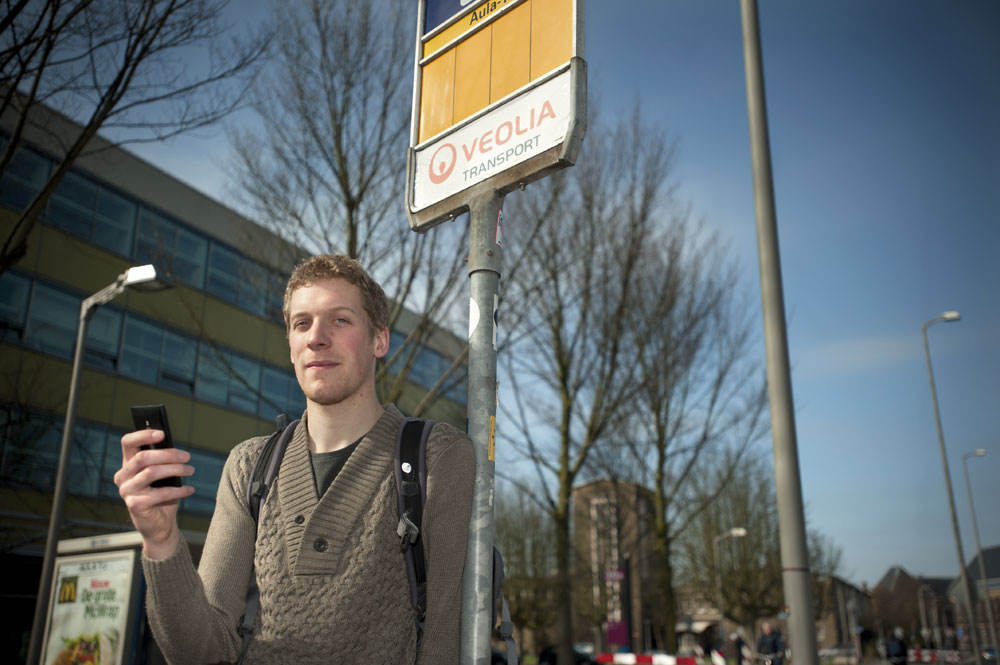In Rotterdam in 2021, the concept of public transportation will have changed due to developments in the city and among its inhabitants, according to Robert Korteland (25).
br />
For his MSc thesis, Korteland designed new concepts that promote sustainable mobility capable of coping with these urban developments. He chose Rotterdam to focus on because of its interesting history. The city was bombed during the Second World War and then rebuilt in a modern style. Its modernist character is now blamed for social and economic problems. When the city was rebuilt in the 1960s, every function had to be separated, and these different areas are now one of the causes of social problems. “At night, the city centre is empty because people live in other areas. This causes people to feel insecure, Korteland explains. Nowadays, the city of Rotterdam is in the middle of its second rebuilding. According to Korteland, Rotterdam in the year 2021 will be denser, house more residents and its car-friendly character will need to make way for cyclists and pedestrians.
Korteland identified two ways in which citizens may react to these developments. Either they are overwhelmed by the increasingly complex city and retreat or they welcome the opportunities and diversity the city provides. In response to these types of citizens, Korteland designed two concepts that support sustainable mobility in Rotterdam.
The Oasis concept is directed at the “comfort-zone people” who look for comfort and feel insecure in the urban life. For these people, Korteland designed double-decker trams with private seats. The stops are separated from the busy and dense station and provide a good overview of the city. “It allows them to find little oases of peace in public transportation,” Korteland adds.
For the ‘master-the-flow people’, the citizens who find the hectic environment inspiring and want to engage in maintaining the liveability of the city, Korteland designed another concept in sustainable mobility, an application called A-C, which allows people to attach requests to public transportation and share their expertise of neighbourhoods with other users. Korteland decided to design an application, because it fits the way of life of the progressive, flexible people who are interested in the developments of the city. The name A-C was chosen because mobility is no longer about moving from A to B, but rather about moving from activity to activity. “It’s about making the best use of the time spent on the way,” he says. “So it is not about moving from A to B, but from A to C”.
Korteland will defend his thesis on March 16 at the faculty of Industrial Design Engineering. He will not use the outcomes of his thesis for further research, however, because he has already received a job offer as an interaction designer at a web office. “My research can be seen as a source of inspiration,” he concludes. “It offers a different perspective on mobility”.



Comments are closed.